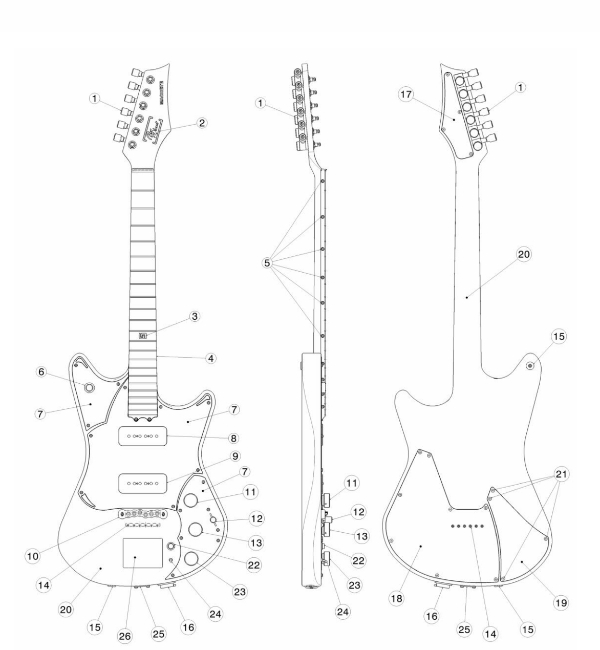Aluminum Guitar Neck
Hey there! If you’ve landed here, it’s because the buzz about aluminum guitars, and more precisely, aluminum guitar necks, has reached you. Brace yourself, because we’re about to blow your mind!
First and foremost, here’s what you need to know about an aluminum neck:
An aluminum guitar neck is lightweight.
The sound surpasses that of a conventional guitar.
It maintains its tuning unaffected by the torsional effects of the strings´ tension.
You can change the fretboard by simply removing a few screws.
Why choose a Ray Planet Aluminum guitar neck?
Durability and Resistance
As you may already know, aluminum is a durable and resilient material. Furthermore, to bolster the durability of our aluminum neck, we have treated the fretboard with a special chrome-plated process. This treatment not only enhances the instrument’s resilience against daily wear and environmental variations, but also adds an extra layer of hardness, ensuring that your guitar maintains its integrity over time.
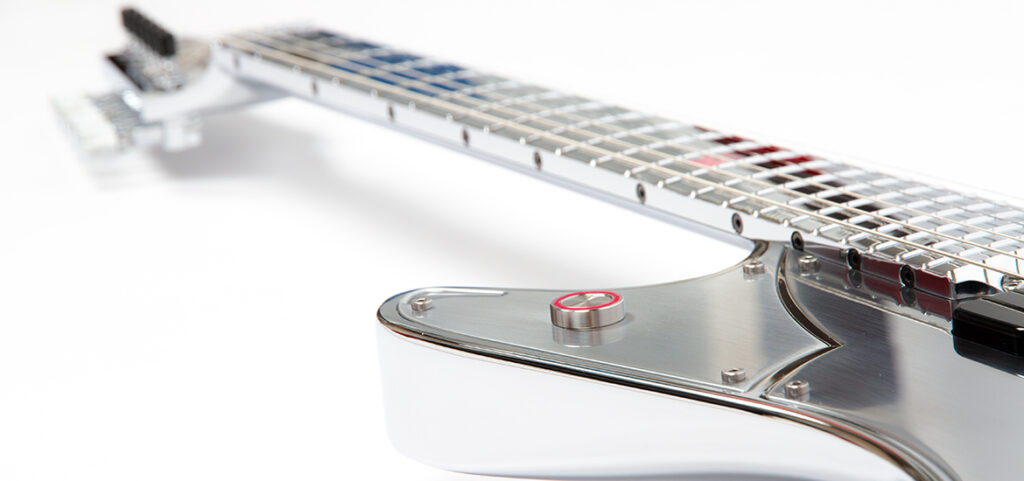
Lightweight for Enhanced Comfort
Size matters, but weight does too. An aluminum guitar is more resistant, harder, and reliable. Furthermore, it embodies all these qualities while maintaining a lighter weight compared to its wooden counterparts, and this not only facilitates the transportation of your guitar but also enhances comfort during prolonged rehearsal and performance sessions.
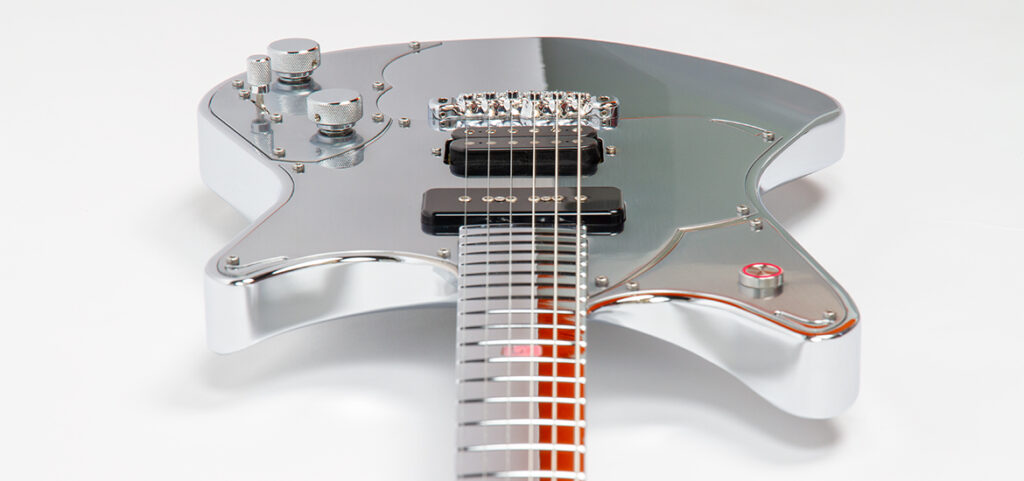
Thermal Stability
Unlike wood, aluminum boasts exceptional thermal stability and, due to its lower porosity, is impervious to humidity-related issues. This unique combination minimizes the risk of deformation, expansion, or contraction with temperature variations, ensuring consistent aluminum neck stability and superior tuning performance for your guitar.
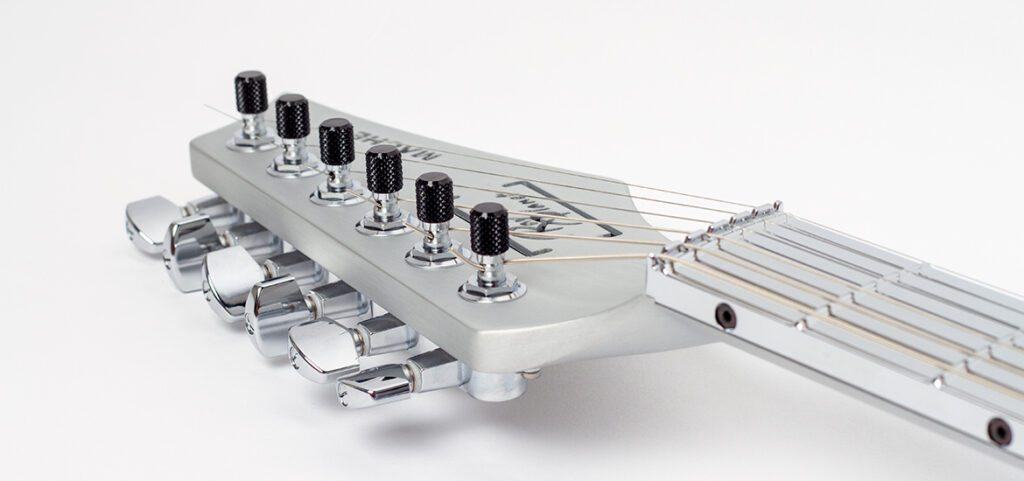
Frequency analysis in Aluminum guitar necks of electric guitars
As a team of luthiers, musicians, engineers, and designers with years of experience in the field and having been fortunate enough to collaborate with hundreds of renowned artists, one thing has always remained as our guiding principle: the importance of carefully selecting each and every component after meticulous testing it over and over again, just to serve one singular purpose – to achieve the desired tone.
In this analysis, we will focus on the frequency response of aluminum necks, addressing the most common questions posed by professional guitarists.
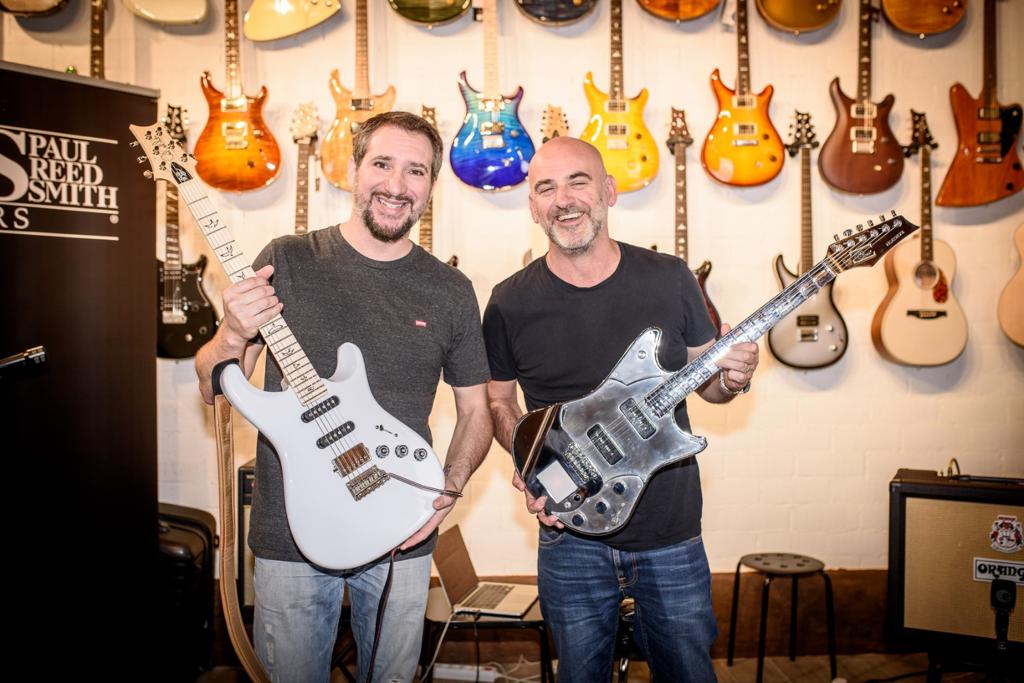
How does an aluminum neck respond to low frequencies?
Aluminum guitar necks are known for accentuating mid and high frequencies, but their ability to handle low frequencies should not be underestimated. While the belief is that they may not offer the same warmth as wood, their response to low frequencies is surprisingly open and solid. Additionally, the lightweight nature of aluminum can provide distinctive clarity even in low notes, adding a unique definition to the overall sound.
In conclusion, an aluminum guitar does not sound like an ‘aluminum guitar’; it simply sounds like… a ‘guitar’, and, by the way, a better one.
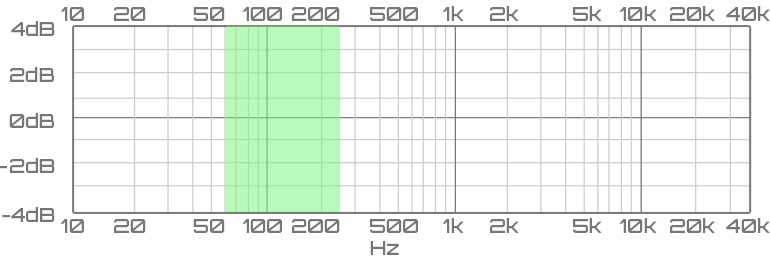
Does an aluminum guitar neck produce a tone that is too bright?
It’s true that aluminum necks tend to enhance high frequencies, resulting in a bright and crisp tone. This feature is appreciated in genres like rock, metal, or even jazz, where articulation and clarity are essential. However, it’s crucial to note that brightness is not static; it can be modulated based on the amplifier and selected pickups. Versatility is in your hands to sculpt the perfect tone, whether softening the high frequencies or accentuating them based on your musical preferences.

How does the aluminum neck affect mid-range frequencies?
Mid-range frequencies are a strong suit for aluminum necks. Their ability to highlight tonal subtleties in this range makes them an ideal choice for musicians seeking a quick and articulate response in their performances. The presence of mid-range frequencies adds a layer of definition, particularly appreciated in solos and melodic passages. The aluminum construction contributes to exceptional clarity in this range, allowing each nuance and detail of your performance to stand out distinctly.
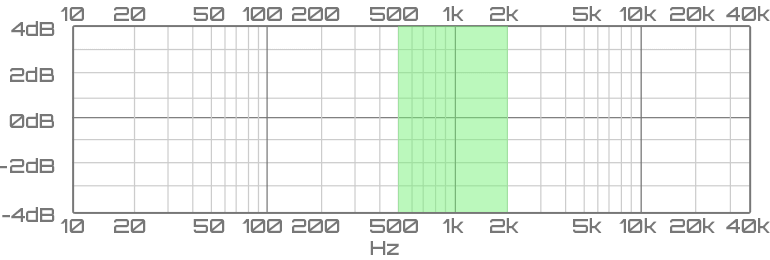
Best on an Aluminum Guitar
At Ray Planet Guitars, our PCT Aluminum Electric Guitar Patent, crafted from a single solid block of CNC machined aluminum, successfully dispels the conventional misconception that an Aluminum Guitar Body combined with an Aluminum Guitar Neck constitutes an Aluminum Electric Guitar.
Our approach and vision of the instrument as a unified piece elevate the guitar beyond traditional boundaries, multiplying the power of sound and refining overall performance. Be wowed by Andy James and enjoy his amazing guitar skills and captivating tunes as he tests out a Ray Planet aluminum neck:
Don’t settle for just an aluminum guitar neck. Get a perfect sound, with a frequency range unmatched by a conventional guitar, 2 upgrades exclusive to aluminum electric guitars -a unique resonance and sustain of over a minute- and 1 upgrade exclusive to Ray Planet aluminum electric guitars: our PCT patented fretboard interchangeable mounting system.
Explore a musical revolution with Ray Planet’s aluminum electric guitars.
Aluminum neck resonance: quick and efficient repose
Aluminum is known for its efficiency in transmitting vibrations. Therefore, it imparts an immediate resonance to necks. This feature allows for a fast and articulate tonal response, especially in mid and high frequencies. The rapid spread of vibrations contributes to a distinctive tonal clarity.
Impressive sustain of Ray Planet’s Aluminum guitar neck
One of aluminum’s advantages is its exceptional ability to maintain tonal integrity in a sustain lasting over 1 minute. The combination of efficient and rapid resonance contributes to prolonged note sustain, bringing expressiveness and allowing each musical nuance to fully unfold. In other words: something that you can never achieve with a conventional guitar.
ALUMINUM GUITAR USER MANUAL
Here you will find all the technical details of our aluminum guitars. We hope this information helps you discover the quality of our electrical guitar company.
